By Aidan Cox, Classical Civilization, ‘25 CRHC Spring Lecture Intern and Hester Lambright, History, ‘25 CRHC Spring Lecture Intern
An Introduction to Dr. Finley’s Research with Primary Sources
On April 1st, 2025, the Mahn Center for Archives and Special Collections, in collaboration with the Central Regional Humanities Center, hosted Dr. Alexandra Finley, associate professor of history at the University of Pittsburgh. Dr. Finley led a workshop dedicated to the exploration of archival materials from the Civil War era. Many of the materials on display supported her current research project on Black Soldiers in the Appalachian region. Workshop participants had the opportunity to examine materials from the Mahn Center’s manuscript and local government record collections up close and to discuss their historical relevance with Dr. Finley.
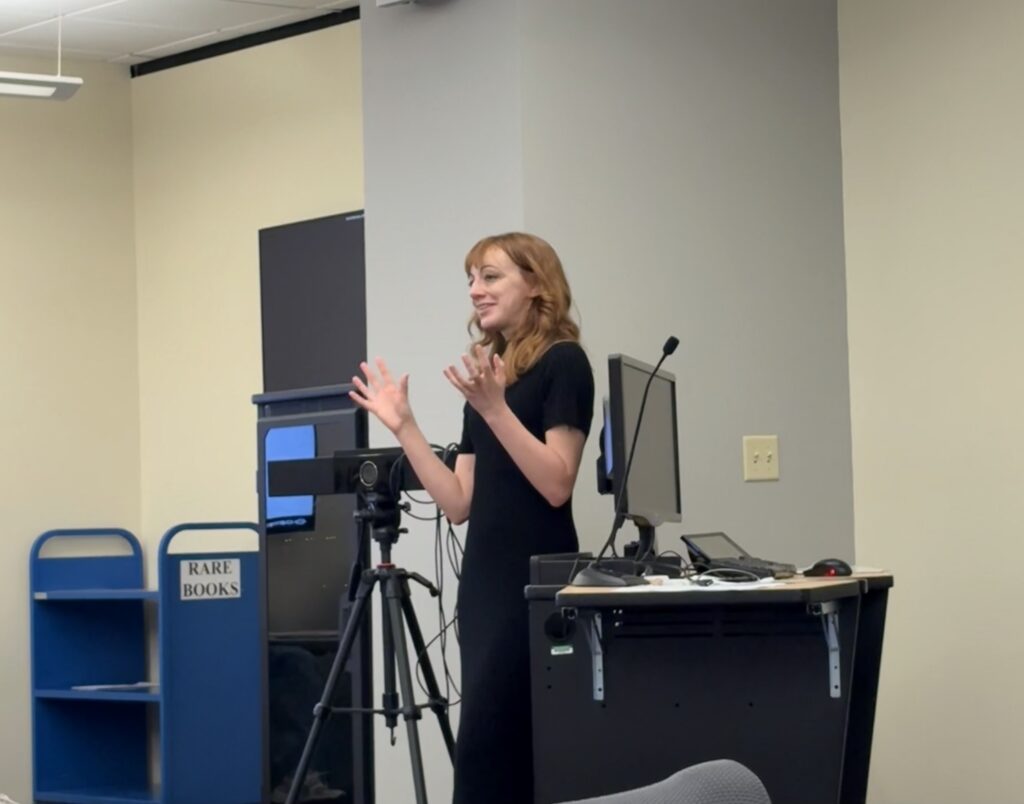
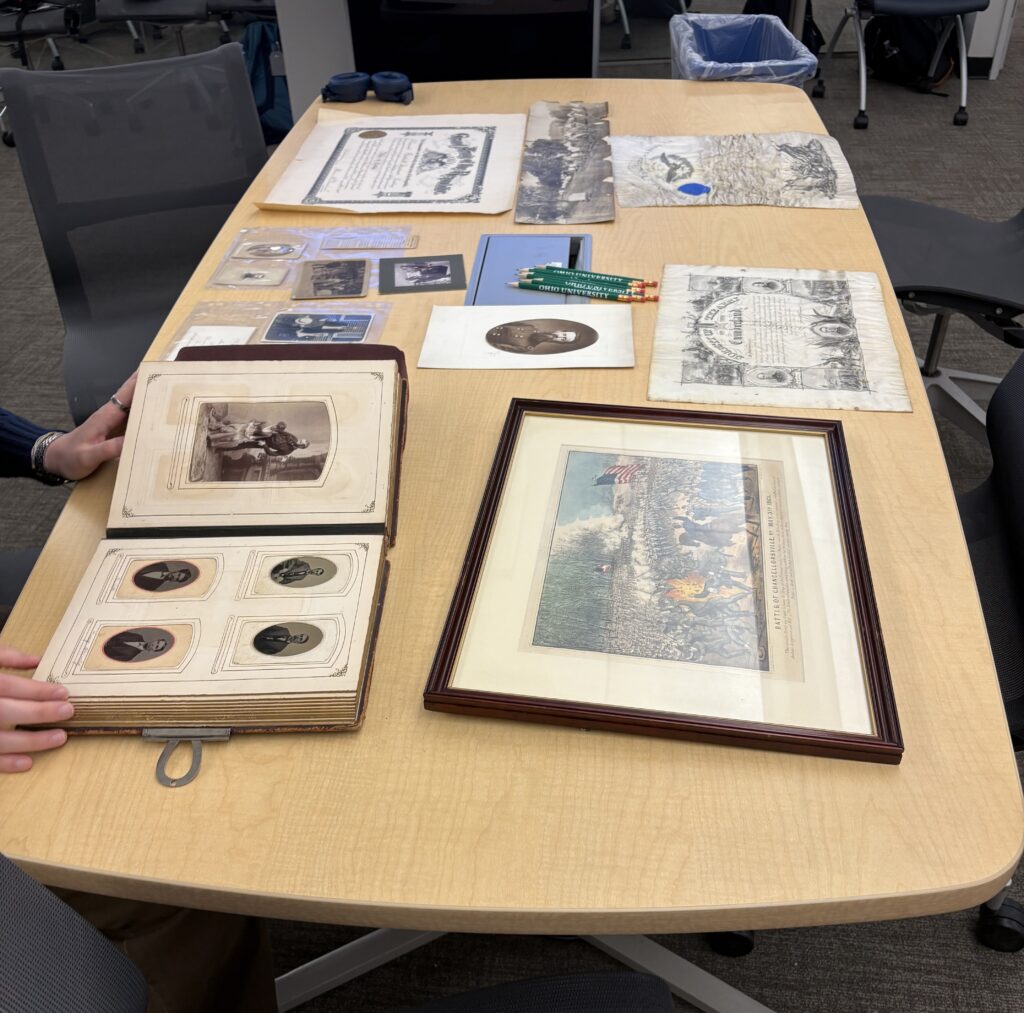
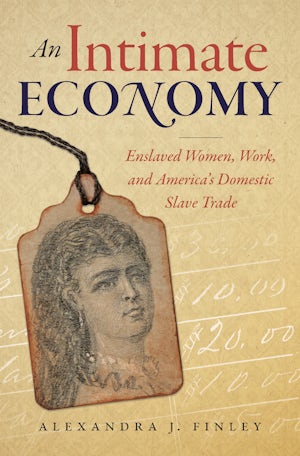
Dr. Finley shared with the workshop participants that she had always been interested in creative writing. Once she entered college, however, she realized she found the real-life stories gleaned from primary sources remarkably compelling. Her first book, An Intimate Economy: Enslaved Women, Work, and America’s Domestic Slave Trade, balances micro-histories of people whose life experiences she uncovered in documents such as personal letters and government census data with a broader history of Black women’s labor in the antebellum South. Human stories, especially those from marginalized communities, Dr. Finley emphasized, are often hidden beneath the words, documents, and behavior of the dominant culture. During the workshop, she encouraged participants to consider how they might use the documents on display to tell those stories.
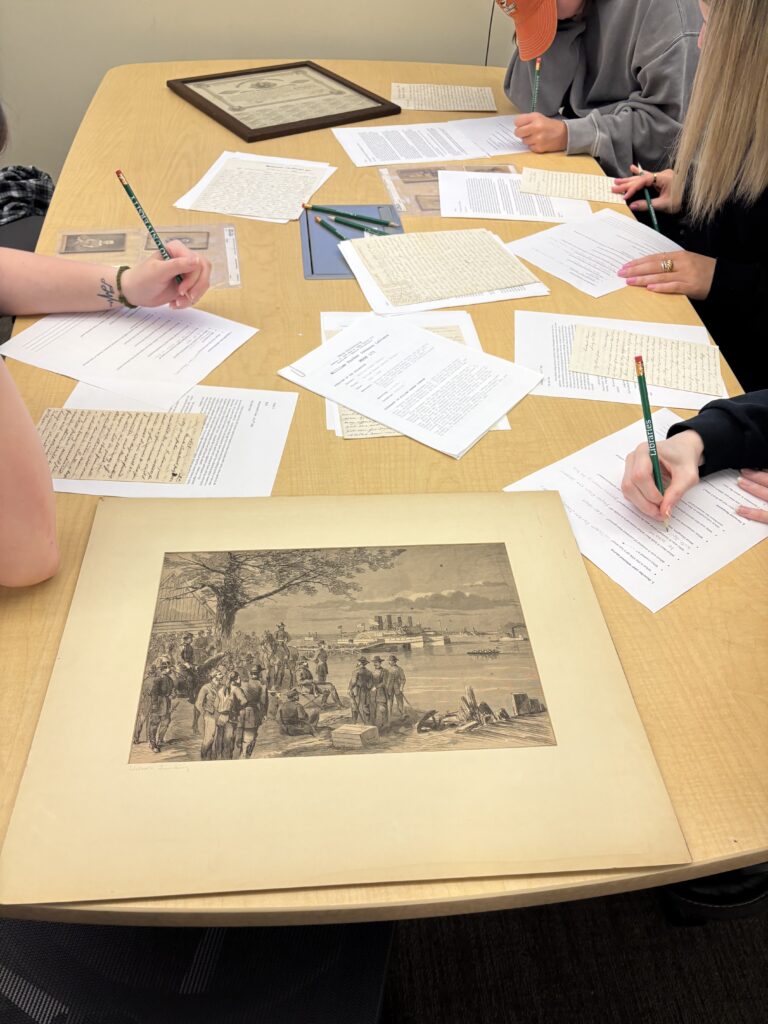
During the first thirty minutes of the workshop, Dr. Finley introduced participants to her research and her usage of primary sources housed in the Mahn Center and in other archives. Everyone then combed through the variety of resources that the Mahn Center provided, selecting the most interesting resource to them and applying Dr. Finley’s presentation to their analysis of the material. At the end of the workshop, participants shared their notes, realizations, and connections to the material.
The Goal of the Workshop
Dr. Finley emphasized the role the researcher plays in analyzing historical documents. A researcher has a responsibility to explore new perspectives on a source that at first glance may not seem to contain helpful information. In her experience with archival materials, she had used the strategies of “looking for silences” and “reading against the grain.”
When a researcher “looks for silences,” they are aware that what or who they are looking for is typically not well-represented in existing archives. Finley knew that many records would not overtly reveal copious amounts of information about Ohio’s African American communities, so she had to look for what the sources were not saying. In her presentation, Finley shared a fugitive slave advertisement from an old newspaper in which the enslaver stated that “his [the enslaved man’s] voice sounds as if coming out of the hollow of a tree.” Fugitive slave advertisements illustrate some of the cruelties and racism that characterized the system of slavery. Still, it inadvertently humanizes the runaway slave by describing him in a vivid and particular way. Even though the runaway slave’s side of the story is not recorded in the ad, modern researchers can imagine his voice in the silence.
“Reading against the grain,” for Dr. Finley, entails looking deeper into the sources beyond the stated facts. One of the main archival collections she consulted for her current research projects are probate ledgers. Some ledgers are massive books with hundreds of pages. The text is handwritten in cursive making the researcher’s ability to decipher the writing critical to understanding and using these resources. Despite the amount of information the ledgers contain, Dr. Finley would not have been able to complete her research without employing the “look for silences” and “reading against the grain” strategies. Students also looked closely at the ledgers during the workshop, finding information about debt cases, criminal court cases, and treasury funds. These ledgers were especially important when mapping community connections.

Dr. Finley discussed material that was especially important for her research beyond the Mahn Center Archives, as well. These were records of pension requests she accessed at the National Archives. These records indicate widow Elvira Mayle’s attempts to recover the pension of her deceased husband, William Minerd. Their relationship and lives were immortalized in these records through testimonies by Mayle and her familial and social network. Significantly in this case, Mayle was thought to be a Black woman married to a white man according to the census, which did not match their actual racial identity. This halted her pension benefits until a government employee’s visit to their community resulted in an official letter which documented their race as ambiguous. This confusion and emphasis on skin tone and classification reflects the anxious preoccupation white people felt surrounding race. Through her analysis of the documents, Finley was able to establish the agency that Elvira Mayle took in petitioning for her right to access her husband’s pension. Her research in this case helped prove that it was possible for individuals affected by racial, sexual, and economic disadvantages to exercise their will to win cases regarding property and access to wealth, even in the face of inequality and disparities.
The Mahn Center Documents
The workshop presented attendees with a variety of sources and archival material. There were resources from the nineteenth century and Civil War era such as ledgers, tintypes, military and family records, photographs, letters, and drawings. Finley’s methodology allowed her to establish a framework for researching Black history in Southeastern Ohio and Appalachian regions. When looking through the formidable ledgers, which are filled with overwhelming amounts of names, information, numbers, and more, she used certain names and families which helped her find the information she needed for her research. As previously stated, looking at the debts or money exchanges made between people could establish familial networks. This aided Finley in her research about Epherem Norris, a Black Civil War soldier, whom she traced throughout the Washington County Inventories & Sale Bills Volume 7 dating from 1881 to 1883. She followed the debts he owed, as well as his record in the courts. Tracing Norris’s history, Finley read against the grain to recover an individual’s story that would have been lost among hundreds of other pages and names.
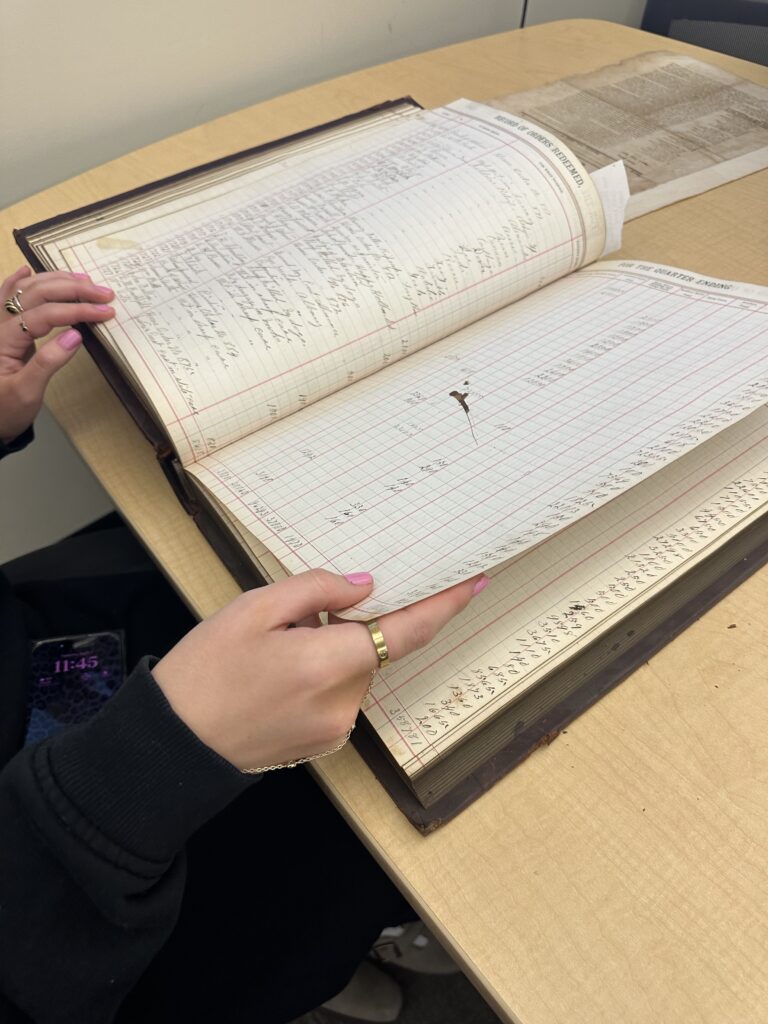
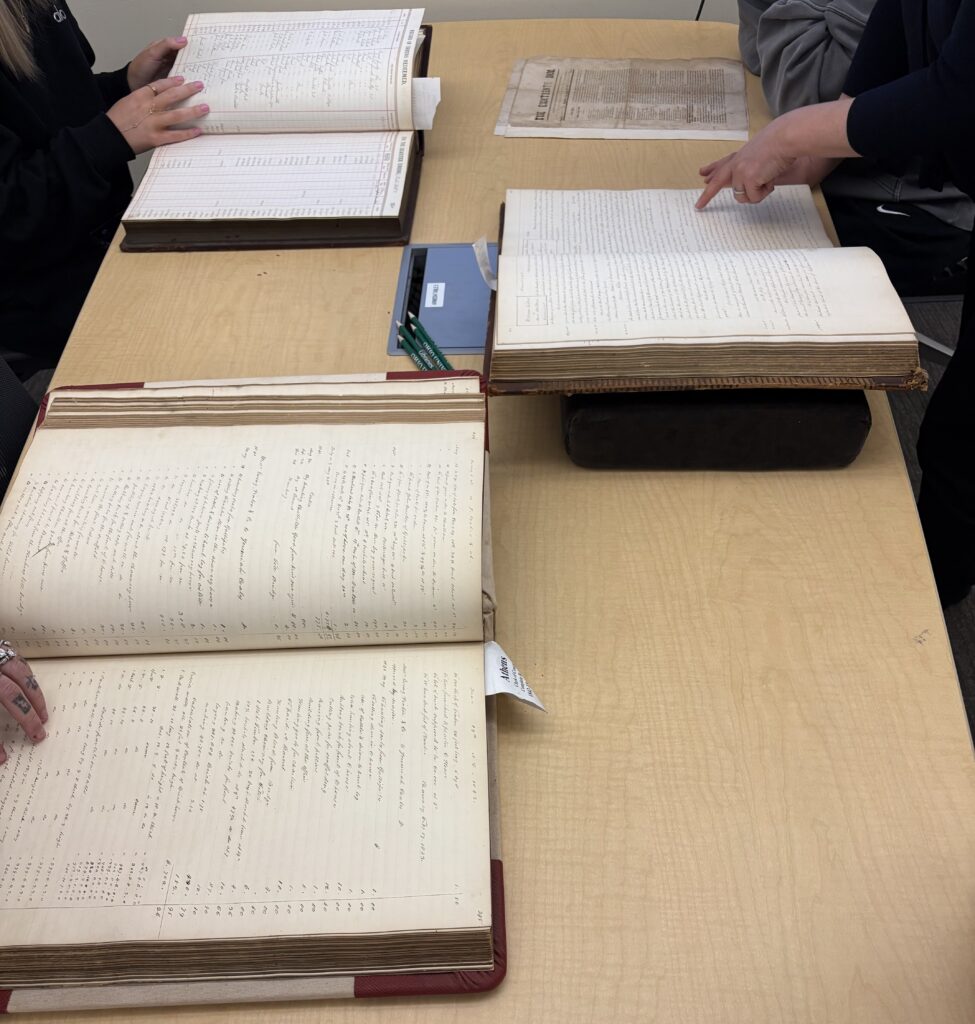
Many of the archival sources on display at the workshop are a testament to the importance of Ohio’s contributions to Civil War history. These materials included the family records of Charles Grosvenor, the letters of Civil War surgeon William Parker Johnson, and a poem which was found with the body of the Civil War soldier, William McKnight. Although these materials were not directly used by Dr. Finley in her research, they are relevant evidence of Ohio’s involvement in the Civil War and useful to any research about the Civil War in Ohio.
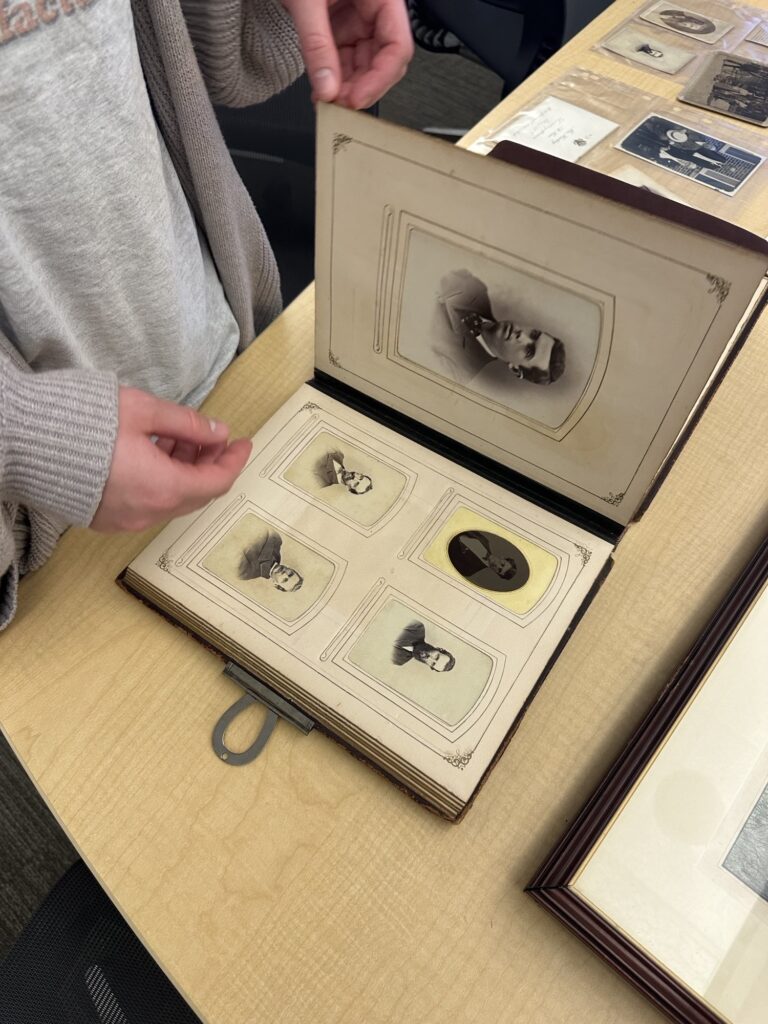

What Did Participants Get From the Workshop?
Avery Richardson, an Honors Tutorial College (HTC) Art History major, was able to connect the workshop to her own research. “I found the workshop to be very beneficial, as it allowed us the chance to have hands-on experience with primary documents. I do not directly work with Civil War records in my current research, but it was a great experience to have the chance to get more comfortable with handwritten documents such as court records for upcoming museum projects! Since I do occasional research regarding slavery in Point Pleasant, WV, being able to see some documentation of Southeastern Ohio was really neat. As a future museum curator, I hope to handle primary documents and work on provenance research of art objects, so it is always nice to have a refresher on the archives.” It is easy for students to gain direct experience in anything to do with archival work, from research to preservation, at the Mahn Center.
History Ph.D. candidate, Jordan Zdinak, who is writing a dissertation on the history of lynchings in the Midwest, said the workshop also gave her a new perspective about her research. “At the workshop, I saw a newspaper excerpt about General Charles Grosvenor, whose name previously appeared in my research on the lynching of Christopher Davis. I knew that Grosvenor was well-known in Athens as a Civil War colonel and general. Still, I was unaware of his extensive political career and his legal practice, which was explained in the newspaper article. This excerpt stood out to me during Dr. Finley’s workshop because he was one of the few individuals who spoke out against the lynching that occurred in Athens in 1881.” This reveals the various ways archival materials can be used in various paths of research to create new perspectives.
Contacting the archives
Interested in learning more about primary sources? The archives have much to offer! Contact Miriam Intrator or Greta Suiter regarding the materials from the workshop and to schedule an appointment to consult the collections of the Mahn Center.
For general archival interests, book an appointment with the Mahn Center For Archives & Special Collections.